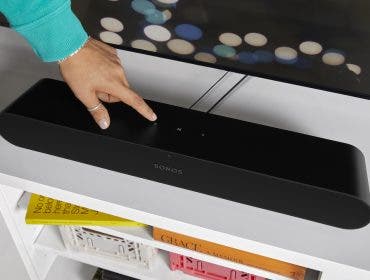RED specializes in high-end digital cinema cameras that are used in professional films, video production, television shows, and commercials. Its cameras are known for their exceptional image quality, but the old Vista Vision V-Raptor only featured full frame sensors. This had the potential to cause issues with Super 35mm lenses. This resulted in downscaling from 8K to 6K in some cases.
The newly released RED V-Raptor S35 solves this problem with a Super 35 Sensor which can accommodate Super 35mm lenses. This allows for full 8K resolution capture without downscaling — even at 8K 120fps.
Key Features of the RED V-Raptor S35
- Multi-format 35.4 megapixel 8K VV + 6K S35 or 8K S35 sensor
- New DSMC3 platform
- 16.5+ Sstops of dynamic range
- Up to 120fps at 8K resolution
- 2x faster sensor scan time for reduced artifacts
- Integrated control display
- Advanced intelligent autofocus
- Locking RF & /i PL compatible lens mount
- 16-bit REDCODE RAW, ProRes
- 4K 12G-SDI outputs (2x)
- 8K live cinematic streaming via a camera control unit with ethernet
What’s New About the V-Raptor S35?
Sensor
The most significant and noticeable upgrade in the latest offering from RED is the Super 35 sensor housed in their updated DSMC3 body. This sensor allows shooting in full 8K resolution at up to 120 fps. Despite being a slightly smaller sensor, the ability to shoot at full resolution provides added reach without any loss in quality. This proves extremely beneficial in various scenarios.
One of the primary reasons for the transition from a full-frame to a true S35 sensor is to support the myriad of S35 lenses already available in the market. Moreover, shooting at 8K without any forced downscale enables the use of S35 lenses with virtually zero vignetting.

Features and Improvements
While the V-Raptor retains its familiar design, it now boasts a Super 35 sensor that scans at the same impressive 8K rate as the VV version. This is nearly double the speed of previous generations while maintaining a dynamic range of 16.5+ stops. Additionally, the XL version comes equipped with RED’s integrated electronic ND filter system. This allows for full-stop control increments.
The rig is also designed to be transformative with optional adapters when setting up a main studio rig. It’s a fair bit bigger and bulkier when compared to the RED Komodo, which can be built out as a studio camera or tossed in a backpack for smaller shoots.
It features two SDI ports for the first time, along with built-in Frame.io integration. This enables you to shoot 8K RAW footage directly to the cloud.
Cost
The V-Raptor is now more cost-effective than ever before thanks to the updated DSMC3 body. The standard 8K V-Raptor S35 (available as a body-only option) is priced at approximately $18,000. The V-Raptor 8K XL S35 with V Lock or Gold Mount costs around $35,000 (also body-only).
This marks a significant reduction in cost compared to previous models. In essence, RED has made it easier for most professional filmmakers to acquire their cheapest and most cutting-edge 8K top end cameras yet.

Who Should Use This Camera?
The RED V-Raptor 8K S35 camera is targeted to cinematographers, production companies, rental houses, and independent filmmakers. The VV version has already been approved by Netflix as a cinema camera. It’s likely that the S35 version will also get the green light in the near future. By investing in a camera with such advanced capabilities, you’re essentially future-proofing your work, investment, and video masters for at least the next decade.
For those in the world of virtual production, the V-Raptor S35 camera integrates seamlessly into your workflow without sacrificing image quality or camera performance. If you’re a high-end content creator, documentarian, or someone who shoots concerts or sporting events, the ability to live stream cinematic 8K footage at full resolution sets you apart from the rest of the prosumer cameras today.
Filmmakers will also appreciate the convenience of using the V-Raptor S35 as an A camera. The Komodo can then be used as a B camera since it’s lighter and can fit on a gimbal.
For wildlife and outdoor filmmakers, the S35 sensor on the V-Raptor S35 offers the flexibility to capture more of the surrounding landscape while maintaining the same focal length. This was not possible when using S35 lenses on full frame sensors. Additionally, the cropped sensor allows for more reach when using telephoto lenses. This can be an invaluable advantage in capturing distant wildlife shots.
Furthermore, firmware updates have significantly improved all RED cameras over time. This makes them ideal for run-and-gun crews, one-man bands, and documentary crews who need to set focus quickly at a moment’s notice.
Comparable Cameras
In comparing the new S35 V-Raptor and S35 V-Raptor XL to their full frame counterparts, the most striking difference is the use of the DSMC3 body. The previous versions utilized the DSMC2. The VV sensor of the full frame versions (which is essentially two S35 sensors put together) is responsible for the larger body size of those cameras.
]The S35 version of the V-Raptor still boasts impressive features despite its smaller size. Although, it does have fewer ports than the XL model. For studio use, the XL model’s abundant SDI and sound ports, as well as its endless configurations, make it a powerful option.
It’s worth noting that the V-Raptor S35 comes with a built-in Canon RF mount, which is renowned for its autofocus speed. It is a popular choice among many photographers and filmmakers. On the other hand, the V-Raptor XL does not come with a lens mount but offers various lens mount options for additional flexibility.
Final Thoughts
The V-Raptor S35 is an incredible leap forward for RED‘s main line cameras. This latest release is the most affordable 8K camera ever offered by the company. It also comes with the new DSMC3 body, significantly reducing the cost and making it more accessible than previous models. With a choice of two sensors, customers can select the one that best matches their lens preferences and shooting requirements.






